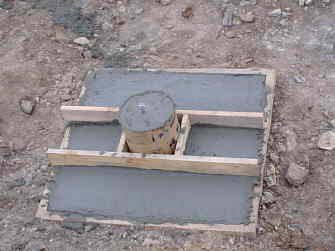Timber Framing with Red Oak
The material needs to be kept dry. Here's info on that, and some other useful tips. November 3, 2010
Question
We have a pretty good supply of red oak where I live and are considering building a few pole barns. Are there any concerns with using oak as the interior timbers of a pole barn?
Forum Responses
From Professor Gene Wengert, forum technical advisor:
Red oak is likely to decay fairly rapidly when it gets wet, especially when in contact with or close to the ground. Any timbers or structural members must be kept dry.
From contributor A:
Here it is not uncommon to see barns built out of red oak that are 50 years old and older. Like the Doc said, ground contact and being kept wet will cause them to decay. Siding does well so long as there is good overhang and the sides do not rest on the ground. Often there would be a small wall of stone stacked along the outside edge. Often the posts that went into the ground were charred and then tarred and packed in loose stone. If it is the wood you have, then it will work given some care and wise use. Also if you cut off some FAS, you may sell it to buy some PT lumber and post or find some locust or white oak for the post.
From Professor Gene Wengert, forum technical advisor:
I guess that I should not be surprised that contributor A came up with some great suggestions, especially about selling any high quality lumber and then using the money to get some PT wood. It is great to have him participating. Maybe he knows who will win the Superbowl?
From contributor H:
You had better put the oak up green or you will be pre-drilling each hole. I cut oak for stalls because horses will chew on pine, but not oak. And when they kick the boards, oak will kick back, but pine will snap. If the weather gets to the oak, like Doc said, it won't last very long - 2 to 3 years.
From contributor T:
As a contractor and studier of old structures, these are the standards I found for long durability:
1) No wood closer than 2 ft above ground. This keeps wood dry and allows moisture to drain out. How many old barns do you see with much damage above 2 ft?
2) Stone, concrete or block bases/foundation up 2 ft - eliminates rot and farm animals don't like kicking. I've done this with piers around outside perimeter, but it is more aggravating to work on.
Some of the barns we repaired or built that didn't have or want masonry, we ran the first bottom 2-3 ft of exterior wall horizontally with full 1"x8" rough sawn or 5/4 pressure treated. This allowed for future repairs to the bottom only section and not the full vertical boards and gave the barn some character.
I've worked on many barns 50 + years old, and if the roof was kept in good shape, the only structural repairs were the normal wood posts in ground or within 2 ft of ground in the splash area. As far as interior, there are way too many timber frames still existing to be problems with using oak.
From contributor A:
I really do like sonic tubes. They can help you build a level building and keep your post out of the ground. Here I dig down and pour a pad, then set up tubes for the post. Pour concrete, remove forms, then level grade and I have a fit place to build. Should you have to come back and repair the building, you can fix the post.
Also remember when old buildings were built, they used what they had and if the building lasted 10 years, it served its purpose. When Grandpa built the barn in 1938 he did not think it would still be standing in 2010 and in use. He did the best with what he had and got the cow and pigs in the dry for the winter.

From contributor D:
There are many red oak frames around me, as well as oak cabins. I've not seen one without powderpost, including the fancy modern oak timber frame. The farm supply knows to keep a sack of Solubor in stock to soak timbers with.
